Lives That Inspire
Always be your best,” said Vice Admiral Walter E. “Ted” Carter Jr. ’81, USN, to the Brigade of Midshipmen. “Never give up, no matter what the odds, and never betray what you know to be right in your journey of character development here at the United States Naval Academy.” These remarks set the tone for the 21st annual U.S. Naval Academy Alumni Association Distinguished Graduate Award Medal Ceremony on 22 March. The histories and commentaries that followed from the honorees—Dr. J. Phillip “Jack” London ’59; Admiral Robert J. Natter ’67, USN (Ret.); Colonel Walter P. Havenstein ’71, USCMR (Ret.); Admiral Robert F. Willard ’73, USN (Ret.); and Captain Wendy B. Lawrence ’81, USN (Ret.)—affirmed the impact adhering to these values had on their lives. Another consistent thread: the critical nature of teamwork, partnership and collaboration, both personal and professional. “One thing you learn here at the Naval Academy—you cannot get anything done in your life of meaning or substance without the help of others. I learned that Plebe Summer,” said Havenstein.
Natter offered a compelling example of that lesson, introducing Johnny Williams, a petty officer in then-Lieutenant Natter’s detachment in Vietnam who could barely swim when he joined the unit, but learned under the guidance of Natter and his chief. Some three months later, when their 24-foot boat was attacked by grenade launchers and automatic weapons fire, Natter and Williams reached land and swam back to the boat, where Williams manned the boat’s only .50 caliber machine gun to suppress enemy fire as they brought the boat down the river. “Johnny Williams did his duty and more. He probably saved the lives of the rest of the crew, who by this time were on the bank of the canal,” said Natter. Williams was there in the audience with Natter’s family to share in his honor. For more on the 2019 Distinguished Graduate Award Medal Ceremony, including video coverage and complete honoree biographies, visit usna.com/dga.
DR. J . PHILLIP “JACK” LONDON ’59
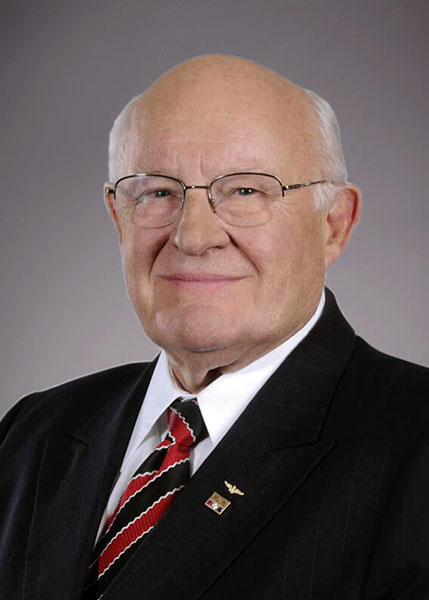 As the architect, CEO and now executive chairman of the modern-era CACI, a worldwide leader in IT solutions for national security missions, Dr. J. Phillip “Jack” London ’59 has a spacious top-floor office in CACI’s Arlington, VA, headquarters. Glassed-in cases hold some of London’s many awards for leadership, business and public service, along with mementos of the Naval Academy and his Navy career.
As the architect, CEO and now executive chairman of the modern-era CACI, a worldwide leader in IT solutions for national security missions, Dr. J. Phillip “Jack” London ’59 has a spacious top-floor office in CACI’s Arlington, VA, headquarters. Glassed-in cases hold some of London’s many awards for leadership, business and public service, along with mementos of the Naval Academy and his Navy career.
And on a wall that London can see from anywhere in the office are framed photos and medals of family members who served and sacrificed for their country. An uncle who landed on the beaches of Normandy and was killed a month later in hedgerow fighting. A cousin, a B-17 bombardier who died from flak wounds during a bombing run over Germany. His wife’s nephew, killed in action in Iraq.
London has been successful at the highest levels of the corporate and public worlds. But at the core of his achievements are the values reflected in his office—family, country, service, character. They have motivated him since childhood and continue to drive him today.
“The Academy Changed My Life”
London grew up in Oklahoma, “a descendent of pioneers and people that had roots from the colonial days,” he said. Leaving those Oklahoma roots to go to the Naval Academy “changed my life. It opened my eyes to the wonders of the world. It gave me opportunities that I would not have had.”
London’s Class of 1959 faced a world very different from today’s global scene. “The Cold War had just begun, World War II was only 10 years behind us and it was just a couple of years after Korea when we took our oath. So it was a different threat scenario. It was one-dimensional, primarily the Soviet Union,” London said.
After graduation, the Class of ’59 and London found themselves close to some dramatic world events. London earned his wings and flew as a carrier helicopter pilot with the Navy’s “hunter-killer” task forces, pursuing the Soviet Union’s nuclear submarines. He was on the airborne recovery team aboard RANDOLPH for John Glenn’s 1962 Mercury capsule, after Glenn became the first American to orbit in space. London’s squadron was also on alert in the Caribbean during the 1962 Cuban Missile Crisis that gripped the country.
“In those early experiences in my squadron and with my duty as a division officer, I learned what accountability and responsibility were all about, the sense of leadership versus management,” said London. “I realized I was going to have to make decisions. I was going to have to be out in front and give direction and be a role model to my division sailors.”
An assignment that had a profound effect on London’s leadership future was his tour with the Navy Materiel Command, serving under WWII heroes that included Admiral Jack Arnold ’34, USN (Ret.), Battle of the Philippine Sea air group attack leader, and Medal of Honor recipient Rear Admiral Eugene Fluckey ’35, USN (Ret.), submarine warfare pioneer. “They were the greatest generation. Not only had they proved their bravery in firefights, but they also were very competent leaders, high-level executives overseeing billions of dollars for the American people, and they were great to be around. I thought to myself, ‘These are people you never want to let down.’ I keep that in the back of my mind all the time.”
“Success Breeds Success”
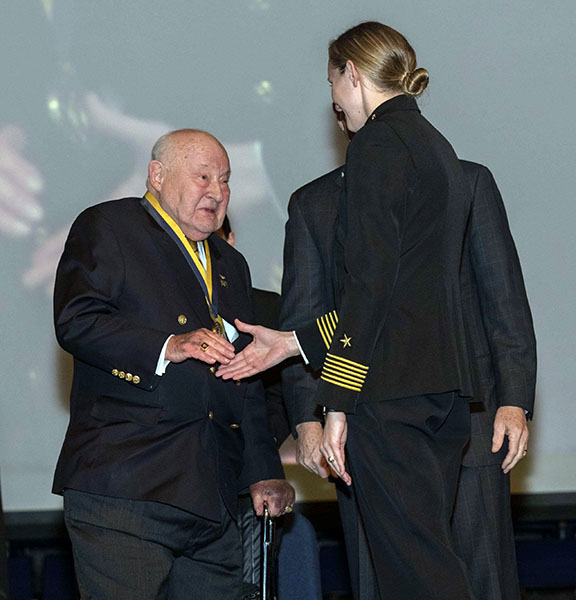 London left active duty in 1971, earned his doctorate in business administration from George Washington University and continued to serve in the Navy Reserve. In 1972, he joined CACI, one of only about 35 employees in what was a small IT professional services firm not far from the Pentagon. The leadership strengths he developed in the Navy would help him take CACI to whole new levels in support of national security.
London left active duty in 1971, earned his doctorate in business administration from George Washington University and continued to serve in the Navy Reserve. In 1972, he joined CACI, one of only about 35 employees in what was a small IT professional services firm not far from the Pentagon. The leadership strengths he developed in the Navy would help him take CACI to whole new levels in support of national security.
In the 1990s, London and his team saw that the future was going to be in advanced and networked IT systems around the world and, later, in electronic warfare and cyber security. They charted a new course, and today CACI is a $5 billion New York Stock Exchange company with more than 20,000 employees in 130 locations worldwide, offering wide-ranging capabilities in IT solutions, national security and intelligence services.
“Over the years that I’ve had the opportunity to step into leadership roles, one thing that I’m absolutely confident about is that success breeds success. When you take a step in a leadership role, you do take some risks, but when you’re successful, it gives you confidence and stature to take the next steps,” said London.
CACI’s financial success and global reach are extraordinary. But perhaps what makes CACI truly exceptional is its commitment to character and integrity, principles that London believes in so strongly he wrote the book Character: The Ultimate Success Factor. Said London, “We’re one of the few companies on the NYSE that has a standing committee of the board of directors on culture, ethics and integrity. I’m very proud of that. We built a corporation that I think has its feet well-grounded in the concepts of doing the right thing.”
CACI is also committed to veterans. More than a third of its employees are veterans, including a number of disabled vets. London is a founding director of Comfort for America’s Uniformed Services (CAUSE), dedicated to helping wounded warfighters. London continues to give top priority to the Naval Academy. “The opportunity the Academy presented me to serve and be of service—and to do the things that I’ve done in my life – is absolutely remarkable. And the lifetime relationships … from a career, professional and social standpoint, I think those relationships are remarkable in their endurance.” London created a CACI summer cybersecurity internship program for midshipmen and has established Naval Academy awards, one for midshipmen who excel in cybersecurity studies, another for history and leadership. He is a major donor and fundraiser for electronic warfare labs in the new Hopper Hall, where midshipmen will study for a kind of warfare that didn’t exist for the Class of ’59. “The dramatic difference today is the threat scenarios are multi-dimensional,” London said. “They come from all over the planet, from China, from Russia, from Iran, North Korea and Syria and the rest of the Middle East. Today’s graduates are going to have to contend with a different set of challenges, including the non-kinetic type, electronic and cyber warfare.” Being named a Distinguished Graduate, London said, “is a real honor. I can’t imagine anything more important to me about my life’s work. So very humbling, and I appreciate it immensely.”
London’s advice for success, as an officer or in civilian professions: “It’s your attitude. You have to want to serve and to participate. And character. The Ultimate Success Factor is the subtitle of my book because I believe it, and I think it serves you well. Good character is a quality we can all own that no one can ever take from us.”
ADMIRAL ROBERT J . NATTER ’67 , USN (RET.)
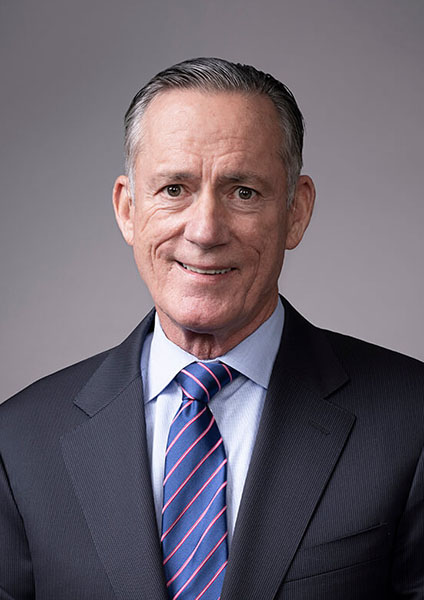 Growing up in small-town Trussville, AL, Admiral Robert J. Natter ’67, USN (Ret.), knew his future included military service.
Growing up in small-town Trussville, AL, Admiral Robert J. Natter ’67, USN (Ret.), knew his future included military service.
“My parents, especially my mother, insisted that all the boys serve in the military,” he said. “And we did—all seven of us—and both of our sisters married officers, one Army, one Air Force.”
Natter became one of four brothers to attend the Naval Academy, where he excelled in intramural sports and gained a reputation as a well-rounded student, one who learned as much from his classmates as his professors and coaches. “My classmates and other midshipmen came from all walks of life, and they were all at the top of their game both academically, athletically and as great people,” he said. “My classmates, especially in my company … all brought qualities that were so impressive that you couldn’t help but learn from them. Even today, when I have a tough decision to make, I still ask, ‘What would Mike Quinlan do? Ted Hontz? John Guibert? Jim Perley? Steve Fagan? Dick Couch?’ These and many more are all great friends of mine, but they all have really superior qualities of leadership and judgment, as well as terrific intellect. They exude positive influence and ideas that create a clear understanding of what’s expected of you.”
Fulfilling a Duty
Natter’s 36-year Navy career offered plenty of opportunities to reflect on the impact of his decisions. Graduating into the thick of the Vietnam War, he headed straight to three years of small ship and brown-water duty in Japan and then to Vietnam’s rivers and coastal waters. “When I said I wanted to go back to Vietnam for my second in-country tour, my detailer said, ‘If you go there again, it will be the end of your career.’ I told him I wasn’t sure I was in this for a career, and if the nation could send draftees there but had invested in me, I felt an obligation to go back,” he said. “The next thing I knew, I had orders back to Vietnam.”
A few months later, as officer-in-charge of a 10-man SEAL boat support detachment in the lower Mekong Delta, Natter and his crew were caught in a Viet Cong ambush while on a lone boat operation. All aboard were killed or wounded, including Natter, who, with serious head and arm wounds, swam back to the boat while it was still under automatic weapons fire. He and crewman Johnny Williams climbed back aboard and directed the boat’s lone .50 caliber weapon to provide suppressing counterfire.
Following five hospital stays and surgeries, Natter resumed his Navy career and his education, which eventually included master’s degrees from the Naval Postgraduate School in business management and Salve Regina College in international relations. Natter still questioned whether he wanted to make naval service his life’s work. “I resigned three times after my obligated duty,” he said. “Once at the Postgraduate School, once while on a frigate and having some medical issues and once back at the Academy when I was flag aide to Superintendent Admiral Kinnaird McKee ’51, USN (Ret). I had been accepted to law school and was prepared to do just that. I sent Admiral McKee my letter of resignation. He called me in and said, ‘No, you’re not resigning. Get out of here and go back to work.’ That was that. What he was really saying was, ‘I have confidence in you, and you and the Navy are right for one another. You will be OK. Get back to work.’ You had to know Admiral McKee. And if you did, you loved the guy.’”
Natter did quite a bit better than OK, serving as executive officer and commanding officer of surface ships and completing a number of tours in Washington, DC, including detailee to the House Armed Services Committee and assignment as the Navy’s Chief of the Legislative Affairs Office. “This was akin to a doctorate in the study of democracy and government,” he said. “It was a great lesson in how government works, and how the Defense Department and Navy fit in that bigger picture. It gives you a different perspective when you’re dealing with a new carrier or a new submarine class, how it all fits together and the role Congress plays. I also discovered that there are wonderful people serving in the House and Senate who are dedicated to service to country and to altruistic governing. Notwithstanding some of the childish antics we witness today, there are still really dedicated people serving. I respect them a lot for that.”
Facing Grave Challenges
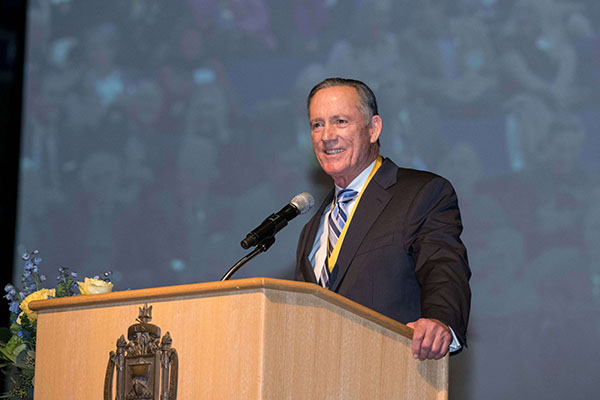 Natter’s growing perspective served him well as his career progressed to include a series of increasingly senior operational command tours, culminating with service as Commander, U.S. Atlantic Fleet and Commander, U.S. Fleet Forces Command, responsible for ensuring the combat readiness of all continental U.S. Navy forces. Two of the defining moments in Natter’s career took place with the Atlantic Fleet—the attack on COLE and the 9/11 attacks. When COLE returned to Norfolk, Natter personally inspected the damage, walked through the spaces, talked to the crew and provided assistance. He visited with wounded shipmates and families of those killed in the attack and attended funerals for sailors who perished. In his review of the investigation into the training and procedures that may have led to the attack, he reversed findings and recommendations that would blame and censure the crew and successfully defended his decision with the Secretary of Defense.
Natter’s growing perspective served him well as his career progressed to include a series of increasingly senior operational command tours, culminating with service as Commander, U.S. Atlantic Fleet and Commander, U.S. Fleet Forces Command, responsible for ensuring the combat readiness of all continental U.S. Navy forces. Two of the defining moments in Natter’s career took place with the Atlantic Fleet—the attack on COLE and the 9/11 attacks. When COLE returned to Norfolk, Natter personally inspected the damage, walked through the spaces, talked to the crew and provided assistance. He visited with wounded shipmates and families of those killed in the attack and attended funerals for sailors who perished. In his review of the investigation into the training and procedures that may have led to the attack, he reversed findings and recommendations that would blame and censure the crew and successfully defended his decision with the Secretary of Defense.
Less than a year later, Natter was attending an event at his daughter’s school the morning of the 9/11 attacks. Reaching Atlantic Fleet headquarters, he found the normal avenues of command in disarray and the nation bracing for potentially more attacks. With no clear communication with higher authority, he sent two Aegis cruisers up the Chesapeake Bay to provide an anti-aircraft missile shield over Washington and ordered the carrier GEORGE WASHINGTON to waters off New York City with a hastily sortied complement of missile-armed fighter aircraft. “I told my staff and our operations personnel that I didn’t know if we had the authority to do all this, but we were going to do what was right, and if [those in authority] wanted to fire me, that was OK,” Natter said. “You have to take the information you have and act on it. In those two cases, we had to determine what we thought was right, do our best and let the chips fall where they may.”
Natter, who throughout his Navy career earned five Distinguished Service Medals, a Silver Star, Bronze Star (V) and a Purple Heart, among others, as well as letters of appreciation from Presidents George H.W. Bush, Bill Clinton and George W. Bush, retired from the Navy in 2003 with COLE berthed alongside the ceremonial pier.
More than 50 years after his graduation, proud of his life with wife Claudia and their three daughters, all of whom, including Lieutenant Commander Courtney Mills ’08, USN, have or are serving in the Navy, Admiral Natter shows no signs of slowing down.
His Navy career behind him, Natter began a new one as president of the strategy consulting firm RJ Natter and Associates. He also has been a frequent television news commentator and a prolific philanthropic board volunteer— including six years as chairman of the U.S. Naval Academy Alumni Association Board of Trustees from 2012 to 2018 and his ongoing service as a member of the U.S. Naval Academy Foundation Board of Directors.
Admiral Natter is perhaps the most steadfast champion of the Alumni Association and Foundation plan to build a modern, consolidated Alumni Association and Foundation Center. Fundraising for the project is ongoing and construction is expected to start next year.
“If you look at the history of our country, which is very brief in the context of world history, and then balance that with how long each of us can expect to be on this earth, why waste one nanosecond?” he asked. “We need to make as big a contribution as we can, and the Alumni Association and Foundation Center is a part of that. This is the first time since the Naval Academy was established that our graduates will have an opportunity to build something new from the ground up specifically for our alumni and our Academy support organizations. We want to make this something we can all be proud of and that today’s graduates can say they were part of. This is our time, and we ought to do it right and make the most of it.”
COLONEL WALTER HAVENSTEIN ’71 , USMCR (RET.)
By Darin Painter
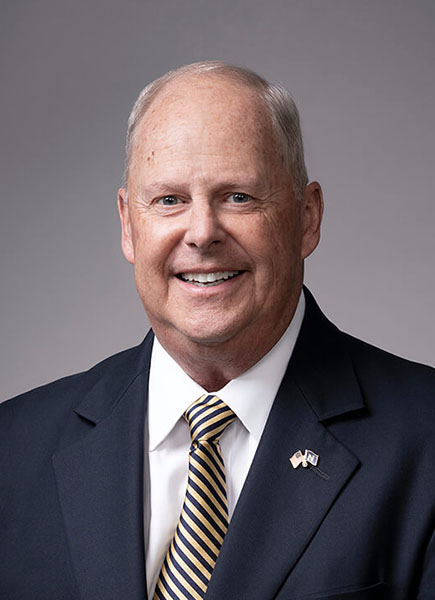 Before he held the CEO position at a $20 billion company, and before he held a vision for a new cyber security curriculum at the Naval Academy, Colonel Walter “Walt” Havenstein ’71, USMCR (Ret.), held a radio in his hands. He didn’t know how the darn thing worked.
Before he held the CEO position at a $20 billion company, and before he held a vision for a new cyber security curriculum at the Naval Academy, Colonel Walter “Walt” Havenstein ’71, USMCR (Ret.), held a radio in his hands. He didn’t know how the darn thing worked.
It was 1971, and Havenstein had just begun active duty in the U.S. Marine Corps after graduating from the Academy with a B.S. in aerospace engineering. Even at a young age, Havenstein was known among peers for his ability to communicate and connect—to make complex things seem simple. But when a fellow Marine handed him a radio and asked how it worked, Havenstein couldn’t transmit the answer.
He took it as a signal.
“Maybe back then I knew the difference between a dumbbell and a decibel, but not much more,” Havenstein quipped. “That moment prompted me to go learn about communications and electrical engineering,” which had previously been passions but not pursuits. “As midshipmen, we’re taught since our plebe days to constantly learn and advance. That lesson has proved to be very important in my life—when you’re expected to know stuff at large organizations, and when other folks are counting on you and vice versa, it’s important to have a philosophy of learning.”
For the past five decades, Havenstein has led with vigor and compassion. He is renowned among business and military leaders for his ability to galvanize and empower teams. He’ll take collaboration over credit any day and he believes in the power of simple mantras to clarify missions.
Dedicated to Defense
Havenstein realized a wide range of military achievements during his active duty and Reserve careers, but is perhaps better known for his ability to command a board room. From 1983-2012, he led meteoric rises of several large organizations in the aerospace and defense sector, all while holding steadfast to core values embraced during his years at Annapolis.
As president and CEO of global aerospace and defense firm BAE Systems Inc., Havenstein led 56,000 employees in five countries. Three years after his taking the helm, the annual revenue had doubled from $10 billion to $20 billion while Havenstein’s team introduced new military capabilities such as the F-35 EW system, Mine Resistant Ambush Protected (MRAP) vehicles and Advanced Precision Kill Weapon Systems (APKWS).
The APKWS program essentially transformed an unguided 2.75-inch rocket into a precision-guided, low-cost, surgical-strike weapon for the military.
Later, as director, president and CEO of SAIC (Science Application International Corporation), Havenstein expanded the company’s footprint in the commercial health, energy and environment markets and grew sales from $10 billion to $12 billion in 27 months.
“My work in industry wasn’t far removed from my days in the Marine Corps—it was all kind of the same puzzle,” Havenstein said. “In both cases, you have complex environments that need someone who can bring clarity and consistency to the team.”
At BAE Systems, that clarity came in the form of big blue arrows. Each year Havenstein would outline four strategic objectives (for example, improving shipbuilding or deploying better ground vehicles) and display them on a large chart designed for the entire organization. The arrows would point to an illustration of a person—picture someone wearing a helmet or a flight suit—to keep the organization focused on users of BAE Systems’ efforts. “Being effective meant keeping objectives simple and then communicating clearly,” Havenstein said. “Being straightforward with attainable objectives is better than trying to boil the ocean.”
Havenstein applied that same mindset later on when he, SAIC and the U.S. Naval Academy Foundation joined forces to support the launch of the Academy’s Center for Cyber Security Studies, which today enhances the education of midshipmen in all areas of cyber warfare. “As threats in the cyber domain become more prevalent, I think no one is better suited to work that problem than the Naval Academy,” he said. “It’s gratifying to see how everyone’s hard work and planning has paid off with this project.”
A Life of Duty and Appreciation
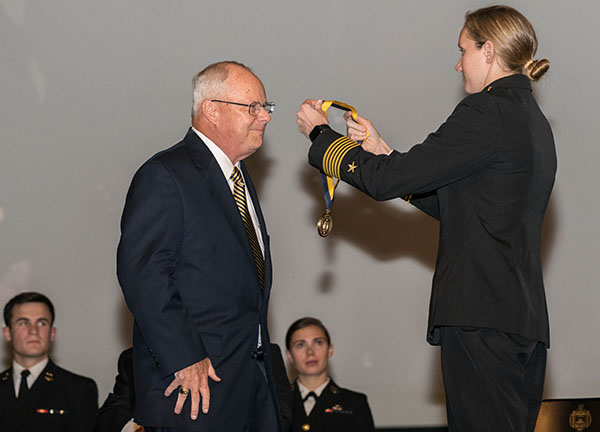 In his letter endorsing Havenstein for the Distinguished Graduate Award, classmate Admiral Timothy J. Keating ’71, USN (Ret.), cited the Latin inscription above the doorway to the Naval Academy Chapel, which translates to “Not self, but country.” Keating said the phrase captures Havenstein’s “unwavering commitment to the security of our nation.”
In his letter endorsing Havenstein for the Distinguished Graduate Award, classmate Admiral Timothy J. Keating ’71, USN (Ret.), cited the Latin inscription above the doorway to the Naval Academy Chapel, which translates to “Not self, but country.” Keating said the phrase captures Havenstein’s “unwavering commitment to the security of our nation.”
Havenstein served on active duty in the Marine Corps from 1971-1983, specializing in tactical communications and systems acquisition management. He then joined the Marine Corps Reserve from 1983-1999, retiring as a colonel. He might not have known how his Marine’s radio worked, but he quickly tuned in to a new program called Unit Level Switch (ULS). Havenstein served as development project officer and acquisition project officer for ULS, under which the first digital communications (telephone and data/message) capability was designed, developed, encrypted and placed into the field.
"In the 1970s, communication in the battlefield wasn’t much more sophisticated than two tin cans and a string,” he said. “I was very fortunate to be on a great team of people working to change that.”
During the ULS project and many others that followed, Havenstein said, he embraced lessons he learned at Annapolis. “A critical thing the Navy taught me was [that] you’re never going to make it in life if you think you’re going to do it all by yourself. We tend to come into the Academy with overinflated egos and quickly realize everyone is just as smart and capable. You can’t get anywhere without engaging your fellow sailor, or later your fellow colleague, and you can’t get anything meaningful done without the encouragement of others. I try to remember that every day.”
These days, Havenstein, a former member of the U.S. Naval Academy Foundation Board of Directors, lends his time and talents to a variety of groups. He is on the board of directors of FIRST® (For Inspiration and Recognition of Science and Technology), a nonprofit organization that inspires young people’s participation in STEM education through robotics competitions. “Our country needs every single one of these young people to help solve our technical challenges and problems,” he said. He’s also active in the Juvenile Diabetes Research Foundation, Marine Corps Scholarship Foundation and the McAuliffe-Shepard Discovery Center.
“I was fortunate to attend and graduate from the Naval Academy,” Havenstein said. “The lessons we learned at Annapolis created a foundation that led to a lifetime of service and the opportunity to share those lessons with so many others.”
ADMIRAL ROBERT WILLARD ’73 , USN (RET.)
by Ellen Ternes
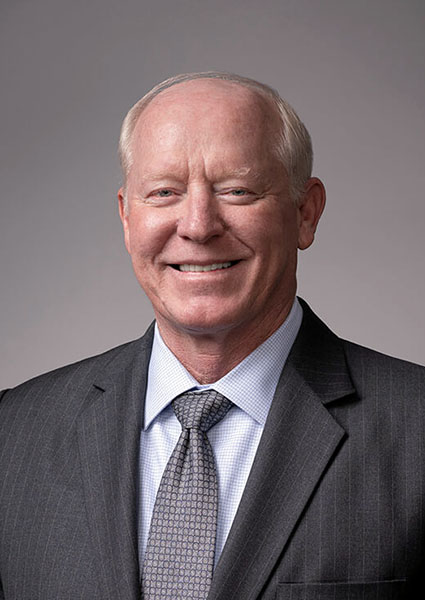 In March 2011, a 9.0 magnitude earthquake off the coast of Japan set off a 40-foot tsunami that devastated Japan’s Fukushima region and led to the world’s worst nuclear disaster in 25 years. Meltdowns, explosions and radioactive material from the damaged Fukushima Daiichi Nuclear Power Plant forced the evacuation of more than 100,000 people and put the 50,000 U.S. military members and their dependents based in Japan in possible jeopardy.
In March 2011, a 9.0 magnitude earthquake off the coast of Japan set off a 40-foot tsunami that devastated Japan’s Fukushima region and led to the world’s worst nuclear disaster in 25 years. Meltdowns, explosions and radioactive material from the damaged Fukushima Daiichi Nuclear Power Plant forced the evacuation of more than 100,000 people and put the 50,000 U.S. military members and their dependents based in Japan in possible jeopardy.
As Commander, United States Pacific Command at the time, Admiral Robert “Bob” Willard ’73, USN (Ret.), led the command’s response to the disaster. Recalled Willard, “When it happened, I was on the phone to the Japanese Chief of Defense from my headquarters in Hawaii almost immediately. In a few days, we put nearly 24,000 soldiers, sailors, airmen and Marines into Japan at his disposal to try to help.”
Then Willard and his wife, Donna, went to Japan to see for themselves. “As we maneuvered through the devastation in a small convoy, there were Japanese soldiers walking the other way carrying body bags,” said Willard. “The survivors we met with were sheltering in an elementary school gymnasium. My wife, Donna, went person to person throughout the gym trying to comfort the Japanese who had lived through so much destruction and loss. It was amazing to see what an earthquake and tsunami of that magnitude could do, and the bravery of the Japanese people in coming together to deal with it.”
The Willards also met with U.S. forces and their families. “Our military members and dependents that were stationed in Japan at the time were scared and stressed, so Donna and I took the time to hold several town hall meetings to provide information and reassurance,” he said. William E. Webster Jr. who, as executive leader of a U.S. nuclear industry support team was involved in the disaster response, said, “Bob’s leadership was the epitome of calm under duress. Frontline leadership.”
The Frontlines
Willard continues to lead in the nuclear field to help prevent another Fukushima. As the president and CEO of the Institute of Nuclear Power Operations (INPO), he has initiated and led the development and oversight of a strategy to shape the performance of the U.S. and international nuclear power industries. He also serves on the board of the international World Association of Nuclear Operators.
Willard’s frontline leadership goes back to high school in East Longmeadow, MA, where he was captain of three sports teams and an award-winning scholar/athlete. At the Academy, he played linebacker on the undefeated plebe football team and defensive end on varsity, was a Regimental Sub-Commander and won the “Military Order of World Wars” prize for academic achievement.
Reflecting on the influences that have shaped him as a leader, Willard said, “I think we grow as leaders through all of our experiences, not just one or two. Sometimes, it’s small things that shape us as much as the big things. I think Navy football and my coaches were a factor. I also think the era in which I was a midshipman made a difference. We were attending the Academy during the Vietnam War. We were serving at a time when service in the military wasn’t celebrated by the country in the same way that it is today. We witnessed Neil Armstrong step on the moon and fulfill President Kennedy’s call to action. I think all of those things helped to shape us into the leaders we eventually became.
“And then the Navy puts us into so many jobs and circumstances where leadership comes into play that we have no choice but to learn and develop.”
Willard also credits his family. “I wouldn’t have succeeded without the support of my wife, Donna, and our children.” Willard went Navy air, logging 3,500 flight hours and 950 carrier landings in the F-14 and eventually commanded the Fighter Squadron 51 Screaming Eagles and the nuclear-powered aircraft carrier ABRAHAM LINCOLN.
When he was executive officer of the Navy Fighter Weapons School, TOPGUN, Willard found himself on a whole new frontline of leadership—with Hollywood, and the iconic film “Top Gun.”
“Paramount came to town with a screenplay that they had derived from a magazine article about the school. I was asked to review it and work with the producers to make the story acceptable to the Navy. Eventually, I was placed in charge of the flying for the movie,” Willard said.
For about four months, we worked hard to capture the flying scenes that would eventually become the “Top Gun” story (he played the Russian MiG-28 pilot). In all, we shot about 280,000 feet of flying film.
“The flying was serious work. We had to learn to fly into the frame of a camera, and often we had to fly closer, slower and lower to accommodate what Paramount needed. It was a unique experience. These kinds of things happen to us in the Navy when we happen to be in the right place at the right time.”
Playing It Forward
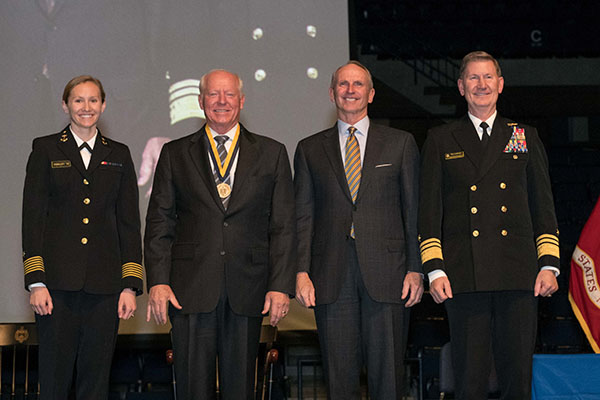 Willard has stayed involved with the Academy. “The Academy has obviously come a long way from my days of slide rules and punch card computer programs,” he said. “I think the digital revolution and resulting information age have probably impacted learning more than anything in our lifetimes. Today, the fighting forces in all the services are digitally armed and equipped, and today’s graduates will face amazing changes in the nature of warfare. I also think the Academy’s become a stronger learning institution since the introduction of women, not just because the women perform well, but because the coed environment spurs competition and more effective teamwork.”
Willard has stayed involved with the Academy. “The Academy has obviously come a long way from my days of slide rules and punch card computer programs,” he said. “I think the digital revolution and resulting information age have probably impacted learning more than anything in our lifetimes. Today, the fighting forces in all the services are digitally armed and equipped, and today’s graduates will face amazing changes in the nature of warfare. I also think the Academy’s become a stronger learning institution since the introduction of women, not just because the women perform well, but because the coed environment spurs competition and more effective teamwork.”
What has not changed is what it takes to be a good leader. Willard offers four points of advice for midshipmen and new officers. “First, leadership is a learned skill that has to be developed, so be willing learners, watch and learn from both the good and bad examples.
“Second, be students of your chosen field, and leave it better than you found it. Be the best you can possibly be.
“Third, I think the world situation that you’re going to confront is highly complex and still very dangerous. Learn the environment you’re going to be operating in, the cultures, the potential flashpoints and the adversary’s capabilities. “And, lastly take care of your sailors and Marines. At the end of the day, it’s those people around us, and the people who are answering to us, that we’re most accountable for.” Of his own legacy, Willard said, “I would hope that men and women I’ve taught, or coached, or somehow influenced along the way will apply what was shared and become fine officers and corporate leaders in their own right. And then one day go on to become the teachers themselves. I think that would be a great personal legacy.”
CAPTAIN WENDY B. LAWRENCE ’81 , USN (RET .)
By Kim Catley
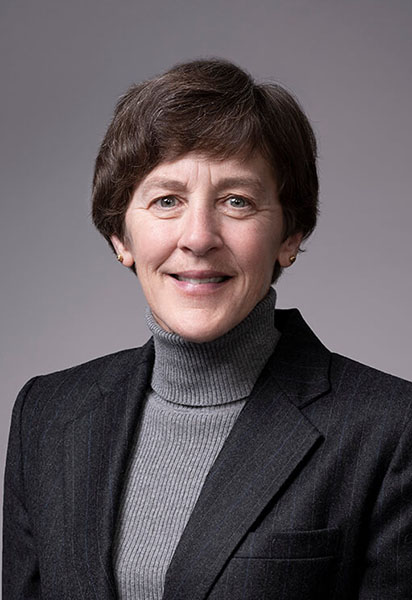 On 26 July 2005, Wendy Lawrence suited up and boarded the space shuttle Discovery at Kennedy Space Center in Florida. She and her six fellow crew members were headed for the International Space Station.
On 26 July 2005, Wendy Lawrence suited up and boarded the space shuttle Discovery at Kennedy Space Center in Florida. She and her six fellow crew members were headed for the International Space Station.
They had spent a year and a half training and preparing for this mission. It was the first since 1 February 2003, when the space shuttle Columbia disintegrated during re-entry, killing all seven crew members aboard—colleagues that Lawrence had known and worked with.
Since the accident, NASA had been researching and implementing improvements. Lawrence and her colleagues on the STS-114 mission were continuing that research by testing safety procedures and repair techniques. Lawrence flew the space station’s robotic arm during two of the mission’s three spacewalks, and flew it again to install a work platform on the space station.
“Usually, when you’re assigned a mission, you know exactly what you’re going to do at the start of your training flow,” Lawrence said. “This wasn’t the case for us. We had to come up with new ways of doing things once we were up in space. We were figuring things out as we went.” In spite of the uncertainty, the mission was successful. Nearly 14 days and 5.8 million miles later, the crew landed at Edwards, having revived U.S. space exploration after unimaginable loss.
The Trailblazer
Lawrence had carved out a unique path from the start. She was one of the first two female helicopter pilots to deploy as part of a carrier battle group. She was the first Navy helicopter pilot and female Naval Academy graduate to fly in space. Now, she’s the first woman to receive the Naval Academy Alumni Association’s Distinguished Graduate Award. “She’s been a trailblazer for her entire career,” wrote Rear Admiral Stephen S. Oswald ’73, USN (Ret.), commander on Lawrence’s first space shuttle mission. Even her entrance to the Naval Academy was pioneering: Lawrence’s class was only the second to accept and graduate women. Because of that, the Naval Academy wasn’t yet an option when Lawrence first began considering universities. Still, the decision was a natural one. Lawrence was born into a Navy family, and her father and maternal grandfather were Naval Academy graduates and aviators. Her childhood and early adolescence were shaped by the absence of her father, a prisoner of war in Vietnam.
That distance was bridged when her father served as Superintendent during her second, third and fourth years at the Academy.
“Every midshipman knew who I was, because they knew who my dad was,” she said.
Lawrence also saw the Naval Academy as the path to achieving her childhood dream of becoming an astronaut. In studying the trajectory of several astronauts, she discovered many had first served as pilots in the Air Force and Navy, or as Army aviators.
After graduation, she was selected for naval aviation and reported to Pensacola, FL, for training to become a helicopter pilot. Immediately following flight school, she was assigned to Helicopter Combat Support Squadron SIX (HC-6), during which time she deployed to the Indian Ocean as part of a carrier battle group.
In the mid-1980s, Secretary of the Navy John Lehman launched a new master’s degree program in ocean engineering or oceanography at Massachusetts Institute of Technology and Woods Hole Oceanographic Institution. Lawrence, who studied ocean engineering at the Naval Academy, had the right background and was invited to apply for one of the six positions for naval officers.
“Thanks to Woods Hole,” she said, “I got to do hands-on research. I had a great thesis advisor who helped me get my thesis published in an academic journal. I think all of that played a significant role in me being selected as an astronaut.”
“Let’s walk the steps together”
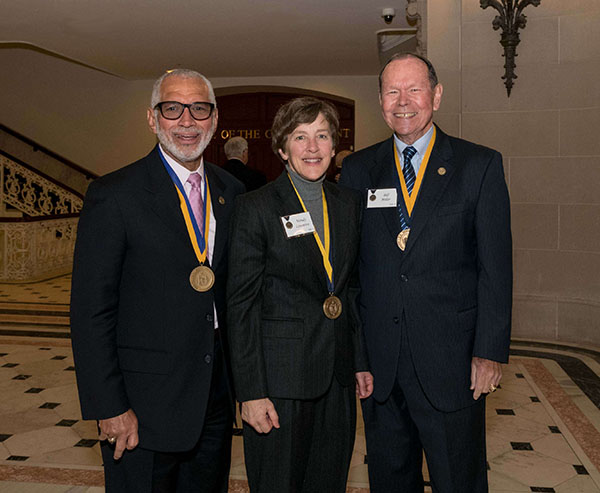 Throughout Lawrence’s career, a single vision has propelled her forward—one she formed as a 10-year-old watching Neil Armstrong and Buzz Aldrin taking those first lofting steps.
Throughout Lawrence’s career, a single vision has propelled her forward—one she formed as a 10-year-old watching Neil Armstrong and Buzz Aldrin taking those first lofting steps.
“There was something about watching them in an environment that none of us had seen before,” she said. “They were bouncing along the surface of the moon. It absolutely captured my imagination.”
By 1992, Lawrence was ready to make that dream a reality.
Even with her distinguished naval career and academic achievements, Lawrence didn’t expect much to come of her application. She was pleasantly surprised when NASA invited her to Johnson Space Center in Houston, TX.
For the next 15 months, she worked her way through a training program she describes as “not all that different from what I did to become a naval aviator.”
Then, on 2 March 1995, she went to space.
Lawrence says she’ll never forget that first sensation as the shuttle Endeavour launched from Kennedy Space Center. “None of the simulators can simulate 6.5 million pounds of thrust,” she said. “I could tell we were leaving the launchpad, and we were going to get to orbit fast.”
The crew’s assignment involved manning three ultraviolet telescopes for around-the-clock observations of more than 100 celestial objects.
“Her operational expertise throughout training and in flight was extraordinary,” wrote Oswald, “but it was her good- natured, thoughtful leadership that helped bond our crew into a cohesive team.”
That leadership brought Lawrence to the Gagarin Cosmonaut Training Center in Star City, Russia, where she led coordination and implementation efforts for a joint space program. She served on two docking missions to the Russian Space Station Mir before her fourth and final mission following the Columbia disaster.
Today, Lawrence meets regularly with young students who visit the Kennedy Space Center Visitor Complex or attend Space Camp. She details her path to space in hopes of capturing the attention of a future astronaut.
“It’s a way for me to thank the people who got me where I wanted to be,” she said. “To reach back and grab the hand of a kid and say, ‘Let’s walk the steps together and I’ll be your cheerleader.’”
Then, maybe they’ll be lucky enough to see that view so few people could describe—the one Lawrence says never got old, even after logging more than 1,200 hours in space.
“I’ve seen thousands of pictures,” she said. “But seeing it with my own eyes, it’s a drastically different experience. It’s very moving to be above your home planet and see the world that way.”
Source: Shipmate April-May 2019